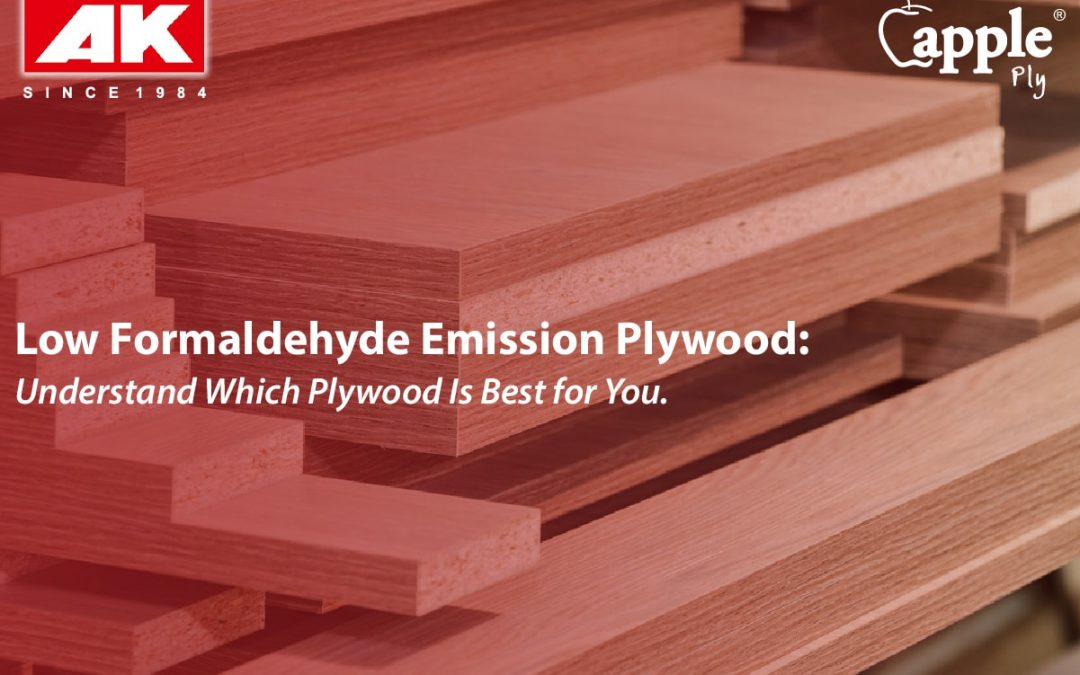Plywood is the go-to option when it comes to the choice of wood for furniture. Most companies use formaldehyde to manufacture plywood. However, various studies have hinted at a link between this compound and certain cancers. Does this mean formaldehyde is dangerous? Does plywood emit formaldehyde? Let’s take a look at the type of plywood to understand this better.
Plywood comes in two types — phenol-bonded and urea-bonded. The resin made to bond the thin layers of wood has formaldehyde as an ingredient. The emission of the resin over time dictates the quality of the plywood. Improvements in manufacturing and resin technologies have helped manufacturers reduce formaldehyde emissions. Plywood products therefore emit low to nearly non-existent formaldehyde readings. Read on further to learn more about this.
Formaldehyde in Plywood
Formaldehyde is a simple chemical- the product of natural processes. It occurs in our everyday life and the formaldehyde found in nature hardly amounts to 0.03 parts per million(ppm) -which is too low to affect people’s health. Does solid wood emit formaldehyde? The answer is yes, wood as a natural substance emits formaldehyde. And, even though the concentration of formaldehyde in plywood is minimal, long term exposure can trigger respiratory symptoms, skin and eye irritations, headache and other serious diseases.
With all the health risks associated with formaldehyde, it’s understandable if you are worried about the long term effects of this compound. But the formaldehyde emissions from plywood are the highest right after the manufacturing process and the levels are negligible by the time it reaches the supplier. Nonetheless, it Is essential to make sure the levels of formaldehyde in plywood are low through formaldehyde emission testing methods.
Standard Formaldehyde Emission Testing Methods
Extraction Method:
The extraction method determines the amount of formaldehyde in unlaminated and uncoated wood-based panels.
Gas Analysis Method:
Here, the sample is placed in a closed chamber in which the temperature, humidity, and pressure are controlled to defined values. Emitted formaldehyde mixes with air in the chamber, and the air is continually drawn from the chamber, passing through gas wash bottles filled with water. After a particular duration, the concentration of formaldehyde in water is determined.
Chamber Method:
It has three options for test chambers to determine the formaldehyde emission from wood-based panels in a climate chamber, which relate to typical conditions in real life. This chamber method is applied to estimate formaldehyde concentrations under various conditions using mathematical models.
How Do You Determine the Type of Plywood That’s Best for You?
You can be rest assured that the formaldehyde in plywood doesn’t pose a health hazard as long as it meets the formaldehyde emission standards. Plywood products usually emit low levels of formaldehyde and these emissions are too low to cause any significant impact.
To be graded as a ‘low-formaldehyde emission’ product, plywood must meet test criteria levels of less than 1 ppm of formaldehyde content. Most particleboards and fibreboards now meet the requirements for ‘low-formaldehyde emission’ products thanks to improved manufacturing and resin technologies.
In India, exporters prefer to follow the European standard, and the plywood is graded by the emission of formaldehyde and European grading — E0, E1, E2, E3. Each product is labelled with the formaldehyde emission class depending on the results.
If you plan on purchasing plywood, we can help you find the best quality low formaldehyde emission plywood in India. To know more about low formaldehyde plywood , reach out to our expert team at AK Group’s Apple Plywood. You can view our work here. Or get a free quotation now!



